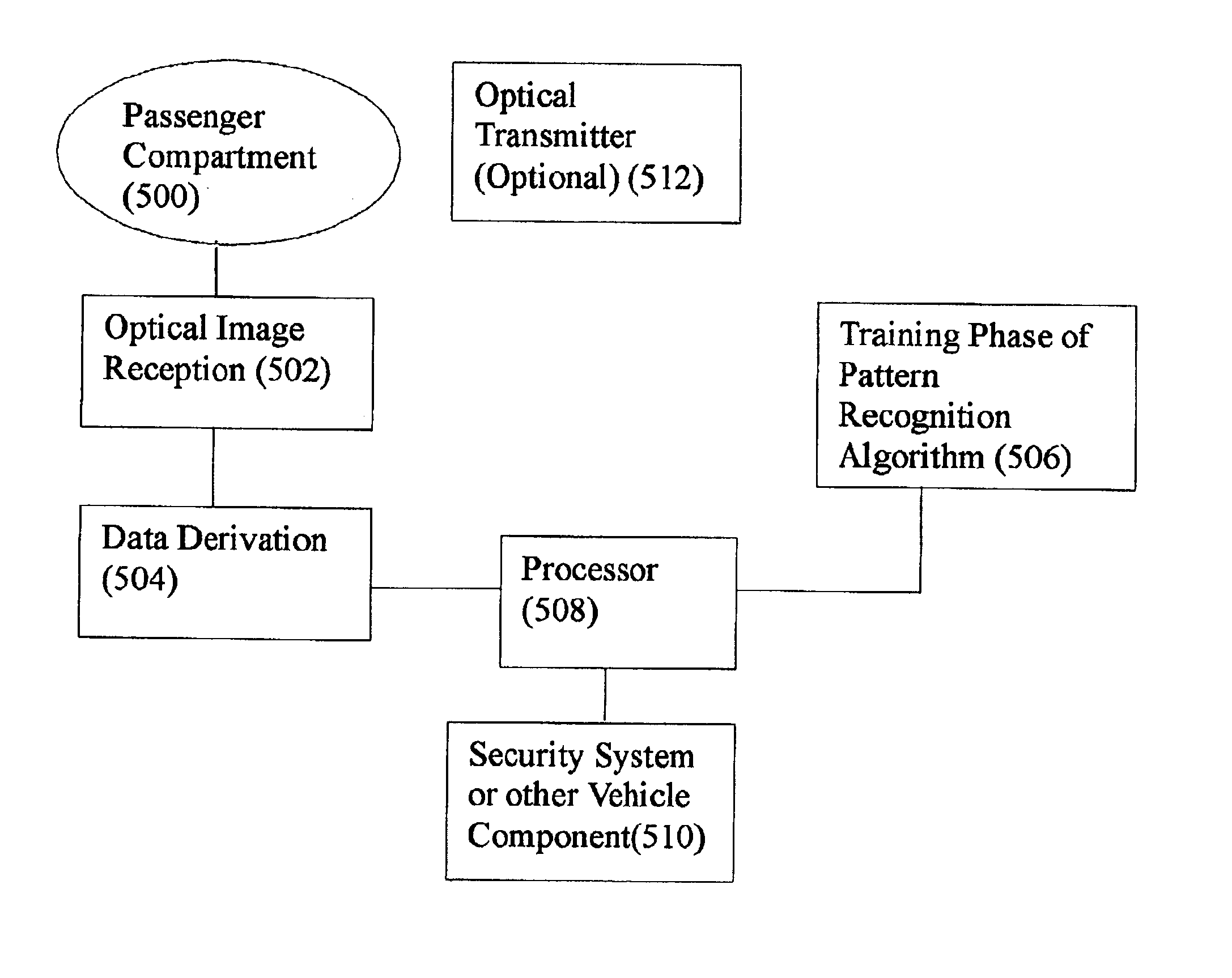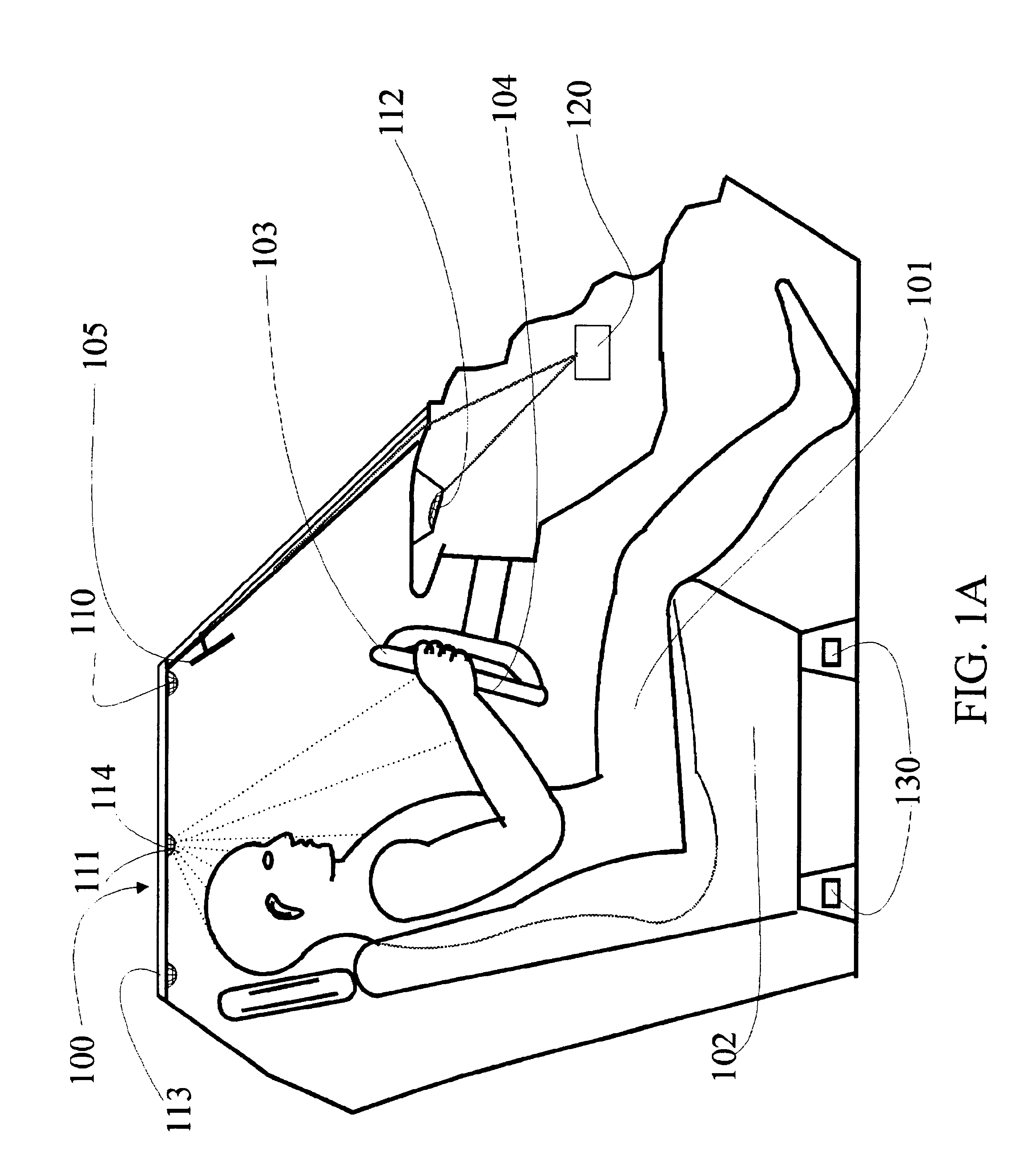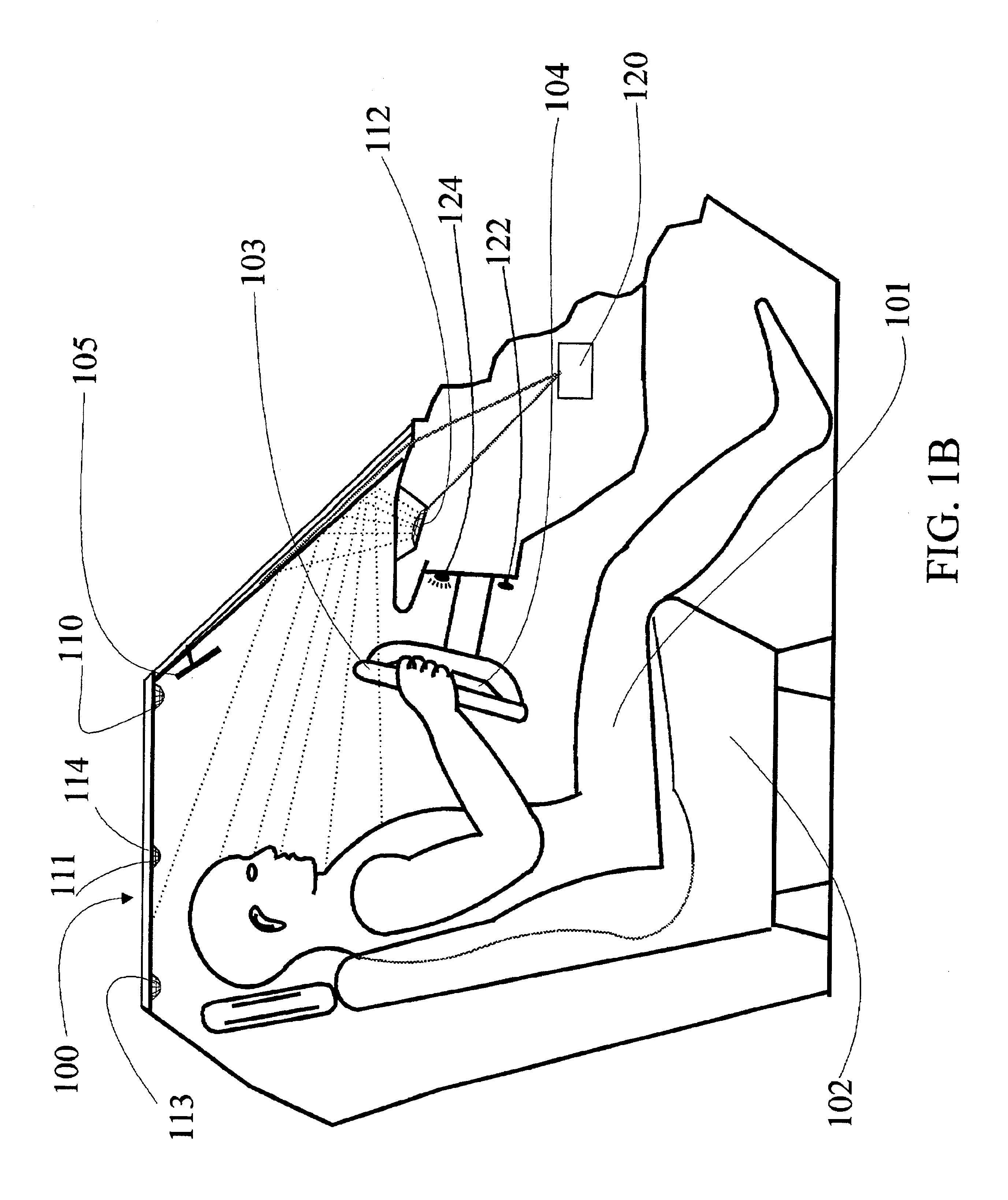Vehicular monitoring systems using image processing
a technology of vehicle monitoring and image processing, applied in the direction of vehicle headlamps, vehicle seats, electric devices, etc., can solve the problems of increasing the number of people injured, increasing the number of people killed, and increasing the number of people seriously injured or killed, so as to reduce the glare of sunlight, improve the system accuracy, and high resolution
- Summary
- Abstract
- Description
- Claims
- Application Information
AI Technical Summary
Benefits of technology
Problems solved by technology
Method used
Image
Examples
Embodiment Construction
as in FIG. 1A illustrating the wave pattern from an optical system using an infrared light source and a CCD or CMOS array receiver where the CCD or CMOS array receiver is covered by a lens permitting a wide angle view of the contents of the passenger compartment.
[0104]FIG. 1D is a view as in FIG. 1A illustrating the wave pattern from a pair of small CCD or CMOS array receivers and one infrared transmitter where the spacing of the CCD or CMOS arrays permits an accurate measurement of the distance to features on the occupant.
[0105]FIG. 1E is a view as in FIG. 1A illustrating the wave pattern from a set of ultrasonic transmitter / receivers where the spacing of the transducers and the phase of the signal permits an accurate focusing of the ultrasonic beam and thus the accurate measurement of a particular point on the surface of the driver.
[0106]FIG. 2A is a side view, with certain portions removed or cut away, of a portion of the passenger compartment of a vehicle showing preferred mount...
PUM
 Login to View More
Login to View More Abstract
Description
Claims
Application Information
 Login to View More
Login to View More - R&D
- Intellectual Property
- Life Sciences
- Materials
- Tech Scout
- Unparalleled Data Quality
- Higher Quality Content
- 60% Fewer Hallucinations
Browse by: Latest US Patents, China's latest patents, Technical Efficacy Thesaurus, Application Domain, Technology Topic, Popular Technical Reports.
© 2025 PatSnap. All rights reserved.Legal|Privacy policy|Modern Slavery Act Transparency Statement|Sitemap|About US| Contact US: help@patsnap.com



